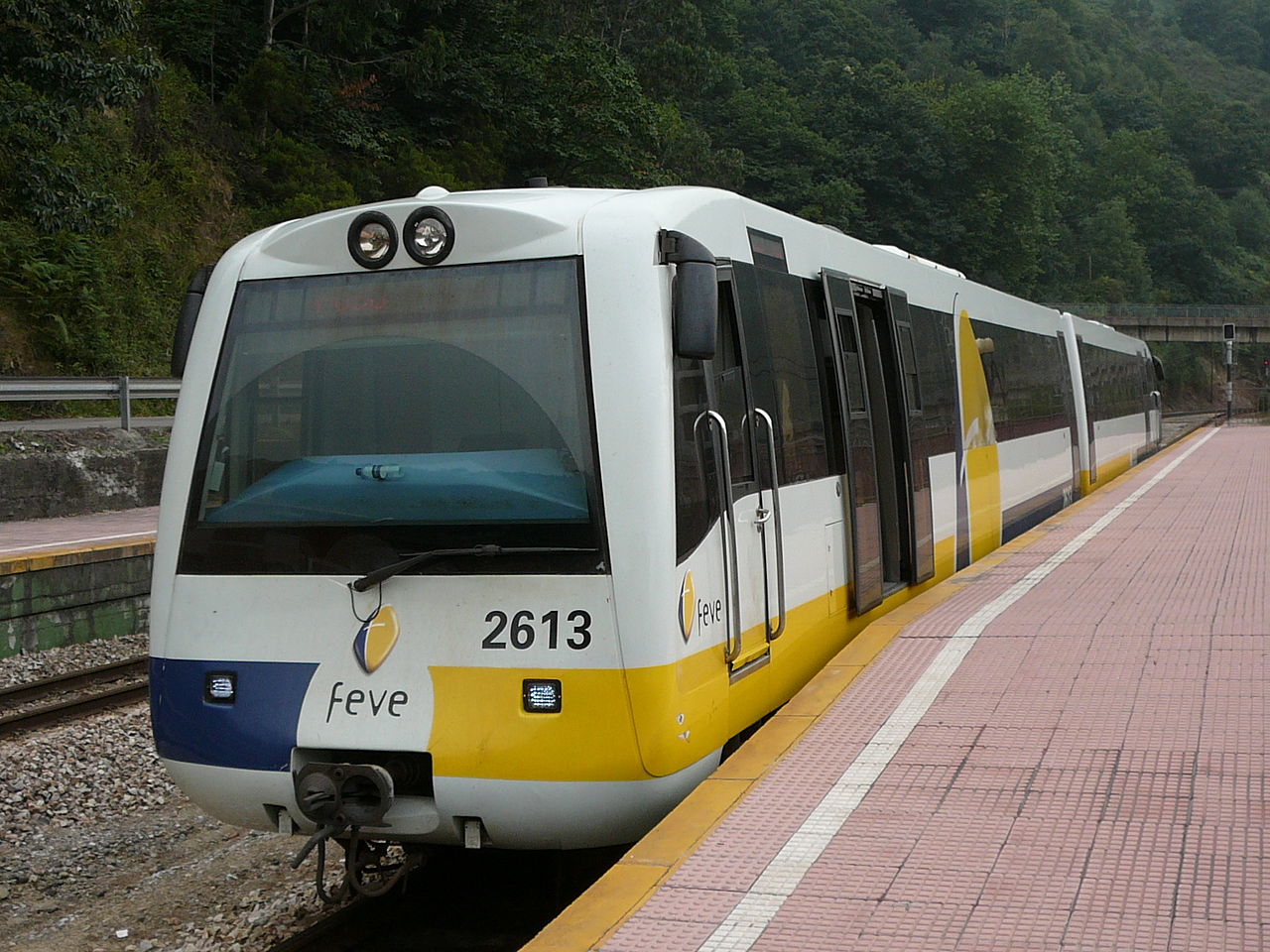After Sitges, we needed a shift. Something slower. Less predictable. Not just another straight-line rush from A to B.
So, obviously, we ended up on a narrow-gauge train creeping through northern Spain like it had all the time in the world.
Feve (Ferrocarriles de Vía Estrecha) doesn’t do urgency. It winds through Asturias, Cantabria, the Basque Country, and Galicia on its own terms. No bullet speeds. No direct routes. Just a rail line that seems to exist purely because someone thought, Wouldn’t it be nice if a train went through here?
The Magic of Narrow-Gauge
Some trains just get it. The point isn’t speed—it’s feeling like you belong to the landscape instead of charging through it.
Feve knows this. It takes the long way, the scenic way, the way big high-speed trains can’t. Too steep, too curvy, too impractical? That’s where Feve thrives. We started in Bilbao, headed for Santander, knowing full well this wasn’t going to be the fastest route. And honestly? That was the whole reason we were on it.
Bilbao to Santander: The Long Way ‘Round
Feve trains aren’t sleek. They’re not futuristic. They’re yellow, blue, and a little worn in—like they’ve been through some things but still get the job done.
Bilbao’s Concordia Station set the tone. No frantic rush. No packed business-class commuters. Just locals, backpackers, railway workers who seemed to know half the passengers by name. It felt… familiar.
Then we pulled out of the city, past the factories and industrial sprawl, and suddenly we were somewhere else entirely. Valleys. Cliffs. The sea flashing between trees. The kind of scenery that sneaks up on you and makes you realize you haven’t said a word in ten minutes.
Sue? She was completely lost in it. Didn’t care about track width, engineering, or the history of the line. But there she was, glued to the window, no distractions. “This is what train travel should be,” she said. And for once, I had nothing to add.
Stops That Make the Journey
Feve doesn’t just pass through places. It stops. And not just at big cities—at towns you might never have heard of, places that feel like secrets you weren’t supposed to find.
- Castro Urdiales – A medieval-meets-seaside kind of town, the harbor looking like it hasn’t changed in a hundred years.
- Laredo – Where golden beaches meet winding old streets, a mix of history and holiday in equal measure.
- Santillana del Mar – A town so perfectly preserved it barely feels real. Just down the road? The Altamira Caves.
No rush. No tight schedules. Get off, wander, get back on when you feel like it. That’s how it should be.
Arriving in Santander (Eventually)
After hours of valleys, cliffs, and coastline, we finally rolled into Santander. A proper maritime city, where the station puts you right where you need to be.
No airport madness. No traffic jams. Just step off the train and start walking.
High-speed rail is great when you need it, but Feve? It’s a reminder that not everything has to be about getting there fast. Sometimes, the best way to travel is the one that takes a little longer.
And we’re just getting started. Next? Another deep dive into Spain’s lesser-known railways. A different narrow-gauge route? A steam train? No clue. But whatever it is, I’ll be on it.
All aboard.

No responses yet